Rocky Mountain Bee Plant, Stinking Clover, Skunk Weed, Navajo Spinach - Peritoma serrulata
|
Peritoma serrulata - Rocky Mountain Bee Plant, Stinking Clover, Skunk Weed, Navajo Spinach. Peritoma is a small genus of about 6 species, all of which are endemic to North America. At some point each species in Peritoma has been considered to be a Cleome species, (Cleome serrulata is considered to be a synonym of Peritoma serrulata), but as it stands now, in most current classifications there is no Cleome species native to North America, and all species in Peritoma are native to this continent.
Distribution of Peritoma serrulata is fairly widespread across North American.. Even though its native range is not much east of the Rocky Mountains, it is occasionally found in the wild in the midwest and northeast. In those cases it is likely a garden escapee or the occasional waif, unlikely to be persistent.
Found in:
AZ, CA, CO, CT, IA, ID, IL, IN, KS, MA, ME, MI, MN, MO, MT, ND, NE, NM, NV, NY, OH, OK, OR, SD, TX, UT, WA, WI, WY
Leave comments on Peritoma serrulata at this link. | 
Distribution of Peritoma serrulata in the United States and Canada:
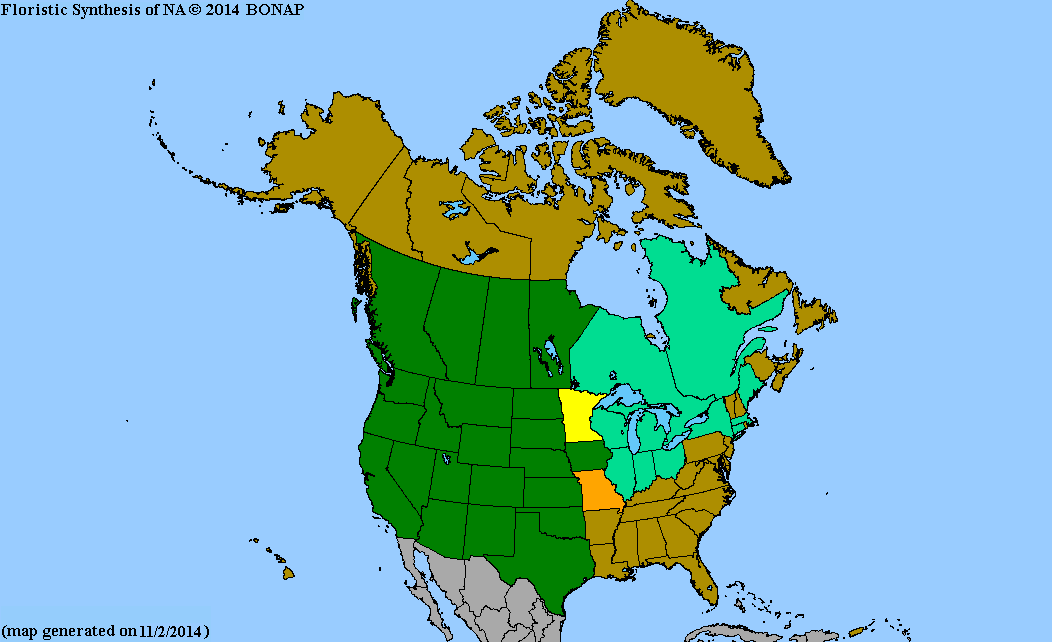
Map courtesy of The Biota of North America Program.
Map color key
Search Our Database: Enter any portion of the Scientific, Common Name, or both.
Do a general Google search of the entire site:
#ad
 Follow USWildflowers on Twitter
#ad
| | Site: Grand County, CO Date: 2016-August-27 | Photographer: Gerald C. Williamson
Nikon D7000
Tamron SP 90MM f/2.8 AF Macro | | The inflorescences of Peritoma serrulata are racemes terminating the several branches. | | 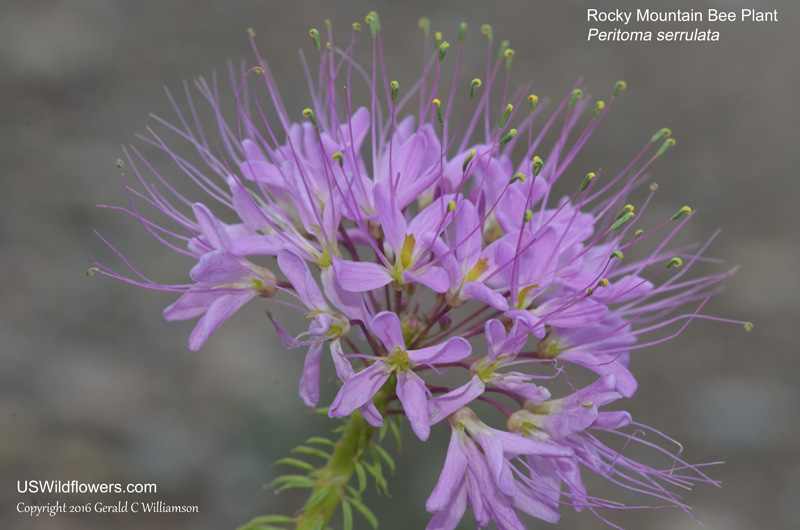
| | Site: Grand County, CO Date: 2016-August-27 | Photographer: Gerald C Williamson
Nikon D7000
Tamron SP 90MM f/2.8 AF Macro | | The flower of Rocky Mountain Bee Plant has 4 pink (some describe as purple) or occasionally white petals that are attached directly to the receptacle. There are 6 stamens with long purple filaments and distinctive green anthers, which with the many flowers in the inflorescence give the flowering plant a fuzzy appearance. The ribbon-like structure is the gynophore, from whence will come the fruit. | | Click on the photo for a larger image
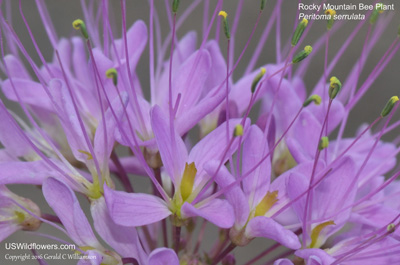
| | Site: Grand County, CO Date: 2016-August-27 | Photographer: Gerald C Williamson
Nikon D7000 | | The fruits start forming before the flower loses its petals. The bracts within the inflorescence give a bristly appearance to the stem within the inflorescence. | | Click on the photo for a larger image
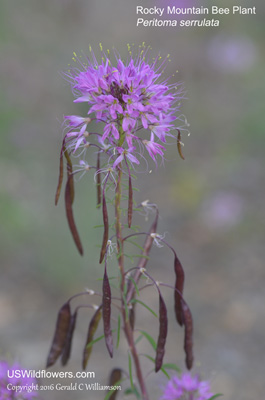
| | Site: Grand County, CO Date: 2016-August-27 | Photographer: Gerald C Williamson
Nikon D7000 | | Peritoma serrulata grows to about 3 feet tall. The leaves are on a petiole and are compound, with 3 leaflets. Notice the bee on the top inflorescence in the photo. The flowers produce a lot of nectar, and the members of this genus have been cultivated to provide food for honeybees. | | Click on the photo for a larger image
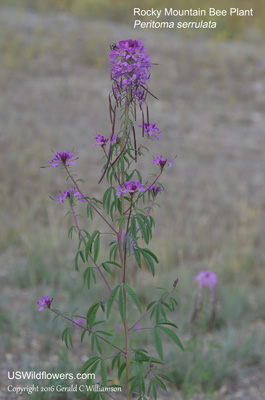
| | Site: Grand County, CO Date: 2016-August-27 | Photographer: Gerald C Williamson
Nikon D7000
Tamron SP 90MM f/2.8 AF Macro | | The Navaho Native Americans eat the fruit and leaves of Peritoma serrulata, explaining the Navaho Spinach common name some apply to this plant. Those parts are also used to make a black dye. The fruit is a bean-like capsule containing a dozen or more black seeds. The bracts within the inflorescence give a bristly appearance to the stem within the inflorescence. | | Click on the photo for a larger image
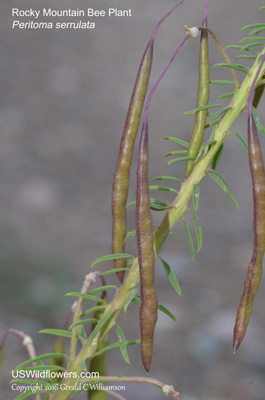
| | Site: Grand County, CO Date: 2016-August-27 | Photographer: Gerald C Williamson
Nikon D7000 | | Rocky Mountain Bee Plant grows in grassy prairies, pinyon pine, juniper, and scrub growth desert areas, as well as along roadsides where these photographs were taken. These photos were taken along roadside above the Colorado River near Kremmling, Colorado. | | Click on the photo for a larger image
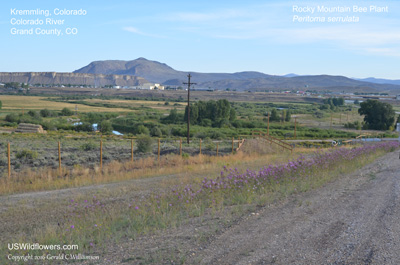
|
References used for identification and information:
|
|
| |
| #ad
|
|








